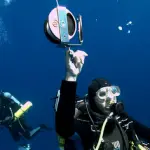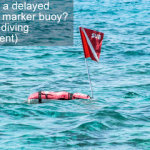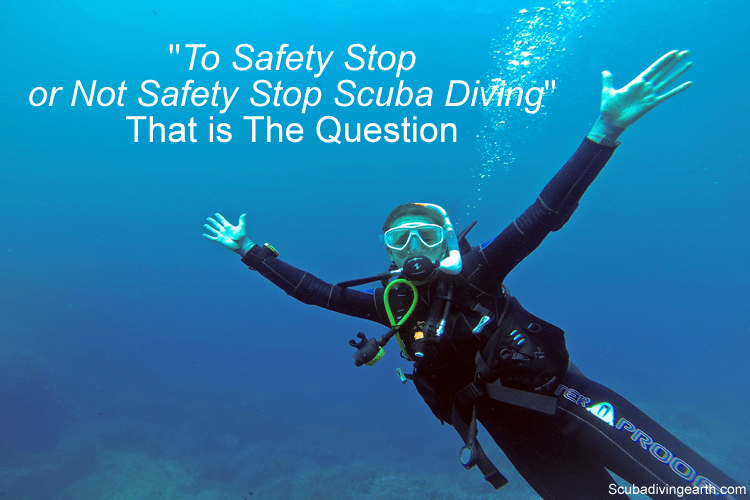
When is a safety stop required?
Scuba diving is about having fun and enjoying the dive. But it’s also about diving safely too, which is why safety stop diving should be considered on every dive.
Safety stop scuba diving at the end of a dive at 5-6 metres (15-20 feet) for 3 minutes is recommended by most dive centres and scuba diving organisations. A safety stop is a precautionary measure to make sure you are properly decompressed from your scuba dive.
The best way to do more diving is to book yourself on a scuba diving liveaboard. You can check the latest and best deals on liveaboards using the following window:
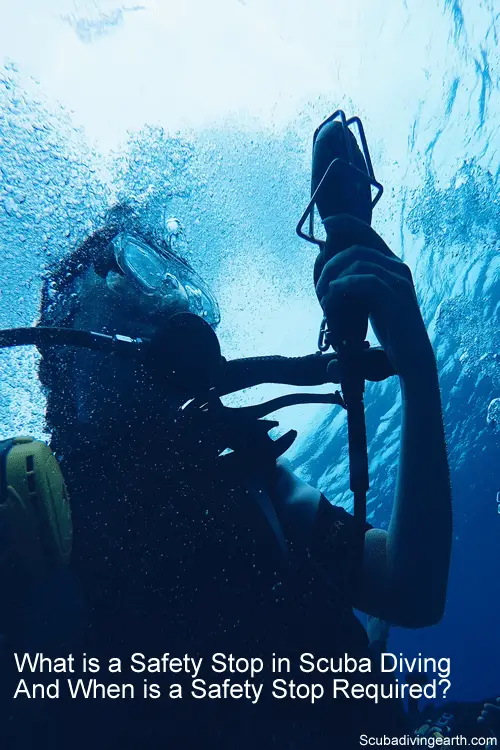
What is a safety stop in scuba diving?
A safety stop scuba diving is a stop at 5-6 metres (15-20 feet) at the end of your dive, which is generally as a precautionary measure. It’s an extra stop that’s recommended by most diving organisations and dive centres for scuba diving safety.
What to consider with a safety stop scuba diving:
- Make sure you leave enough air to perform the safety stop.
- A safety stop is not a decompression stop as such.
- Safety stops should not replace decompression stops when you exceed your no-stop decompression limit.
- Decompression stops are different to safety stops as decompression stops are required stops for your dive profile. (See below for the difference between a safety stop and a decompression stop).
- Having said that a safety stop is to extend your decompression time on a dive so you properly decompress at the end of your dive. Which is similar to a decompression stop.
More Reading: How do I get a dive buddy? (5 easy ways to find a dive buddy)

When is a safety stop required?
It’s recommended that a safety stop scuba diving is required every time you scuba dive. Unless your maximum dive depth is no more that 10 metres (33 feet). If the dive is very shallow there’s no need to do a safety stop, as the whole dive has been shallow water.
How to do safety stop scuba diving
How to do safety stop scuba diving step by step:
- Slowly ascend using your dive computer to control your ascent rate until you reach 5-6 metres below the surface.
- Neutralise your buoyancy using your buoyancy control device. If you have a shot-line (hang-line) or the anchor line, use this to maintain a constant depth.
- Wait three minutes at this depth and use your dive computer to monitor your depth and time.
- When the three minutes have elapsed make a slow controlled ascent to the surface.
Why are safety stops scuba diving necessary?
- Every scuba diver is different and will retain nitrogen in a different way.
- Every scuba diver has a different body make-up, which includes differing percentages of muscle mass and body fat. Different body tissues may off-gas nitrogen at differing speeds.
- Each person has a different level of fitness. This can affect the speed at which nitrogen is off-gassed from the body.
- You may be more hydrated or dehydrated than your dive buddy. Levels of hydration affect off-gassing speed.
- You may be a smoker or use vapes, which are thought to affect decompression rates.
- Water temperatures affect the speed at which nitrogen is absorbed and off-gassed.
All of these factors will affect how quickly dissolved nitrogen is released from your body tissues on your ascent from your dive.
There are many factors that can affect the rate of nitrogen release on your dive ascent. Whilst dive computers are conservative in their calculations for ascents, they are designed for the average person. Which is why a safety stop for three minutes is a necessary precaution.
You may like to read about these 14 decompression risk factors. When you read these fourteen risk factors you’ll realise why safety stops scuba diving are so important.
Why not simply rely on your dive computer and not do a safety stop?
Although most dive computers are ultra conservative how they calculate ascent rates, dive times and decompression stops, it’s impossible for them to take account of every body type and situation. Many dive computers have a safety stop mode and count-down built-in.
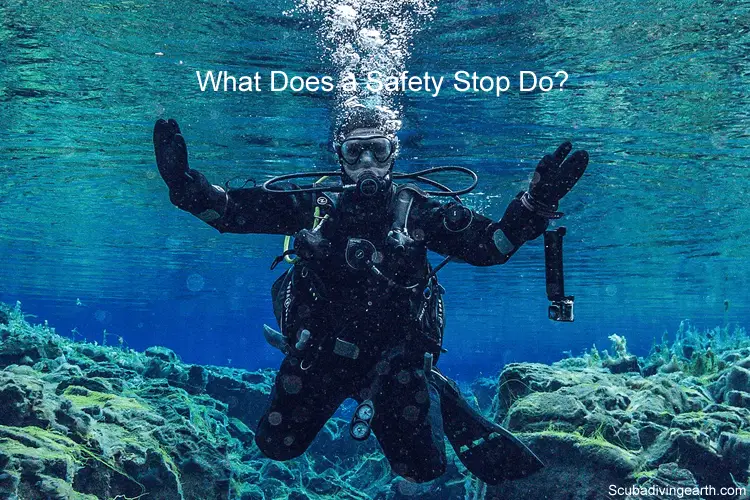
What does a safety stop do?
A safety stop scuba diving is similar to a decompression stop as it allows extra time for the nitrogen gasses to escape safely from your body.
You should think about every dive as a decompression dive. The minute you descend to depth, your body begins to take on more nitrogen than normal. Which means you must ascend slowly from any dive depth to allow time to decompress. Which is also why you should do a safety stop on every dive too.
What is the best depth for a safety stop scuba diving?
The best depth for a safety stop scuba diving is 5-6 metres (15-20 feet). Whether you opt for 5 or 6 metres for a safety stop both are okay. I prefer 6 metre stops as I find it easier.
It’s more important to do a safety stop that to worry too much about which depth is better.
What is the difference between a safety stop and decompression stop?
The difference between a safety stop and a decompression stop is a decompression stop forms part of a dive profile. Whereas a safety stop doesn’t. But safety stops and decompression stops are similar as they both allow extra decompression time.
- A safety stop is precautionary and an extra stop for safety reasons. It’s less likely if a safety stop is missed you will get decompression sickness.
- A decompression stop is a required stop and cannot be missed. Your dive has entered what’s known as a decompression stop dive. If decompression stops are missed it’s highly likely you will end up with decompression sickness.
- Decompression stop dives are when your dive time at a certain depth have exceeded the ‘no decompression stop time limit‘. The stop intervals or decompression stops and the number of them will depend on the depth of your dive.
More Reading: What should you not do after scuba diving (11 must NOT do’s after diving)
PADI safety stop rules
PADI safety stop rules are to stop for three minutes at 5 metres (15 feet) to help off-gas nitrogen absorbed while diving. The purpose of the safety stop is to give your body time to release nitrogen slowly.
PADI safety stop rules were introduced in the PADI Open Water Manual in 1984. Since then safety stops have become the norm and dive computers now remind divers to do a safety stop.
BSAC safety stop rules
BSAC recommends you should do a safety stop of at least one minute at around 6 metres (20 feet) if it’s safe to do so. But recommend that longer safety stops are even better.
NAUI safety stop rules
NAUI safety stop rules include a safety stop at 5 metres (15 feet) for three minutes. But NAUI also recommend a one-minute deep stop at half your maximum depth on all dives deeper than 12 metres (40 feet). Once the deep stop is complete NAUI recommend you ascend slowly at no faster than 30 feet (9 metres) per minute.
I hope you enjoyed this article about safety stop diving
I’d love to hear from you. Tell us about your adventures of diving and snorkeling, in the comments below. Please also share your photos. Either from your underwater cameras or videos from your waterproof Gopro’s!
If this article hasn’t answered all of your questions. If you have more questions either about snorkeling or types of scuba diving (or specifically about safety stop diving), please comment below with your questions.
There will also be many more articles about scuba diving (and snorkeling) for you to read and learn about these fabulous sports.
Have fun and be safe!

